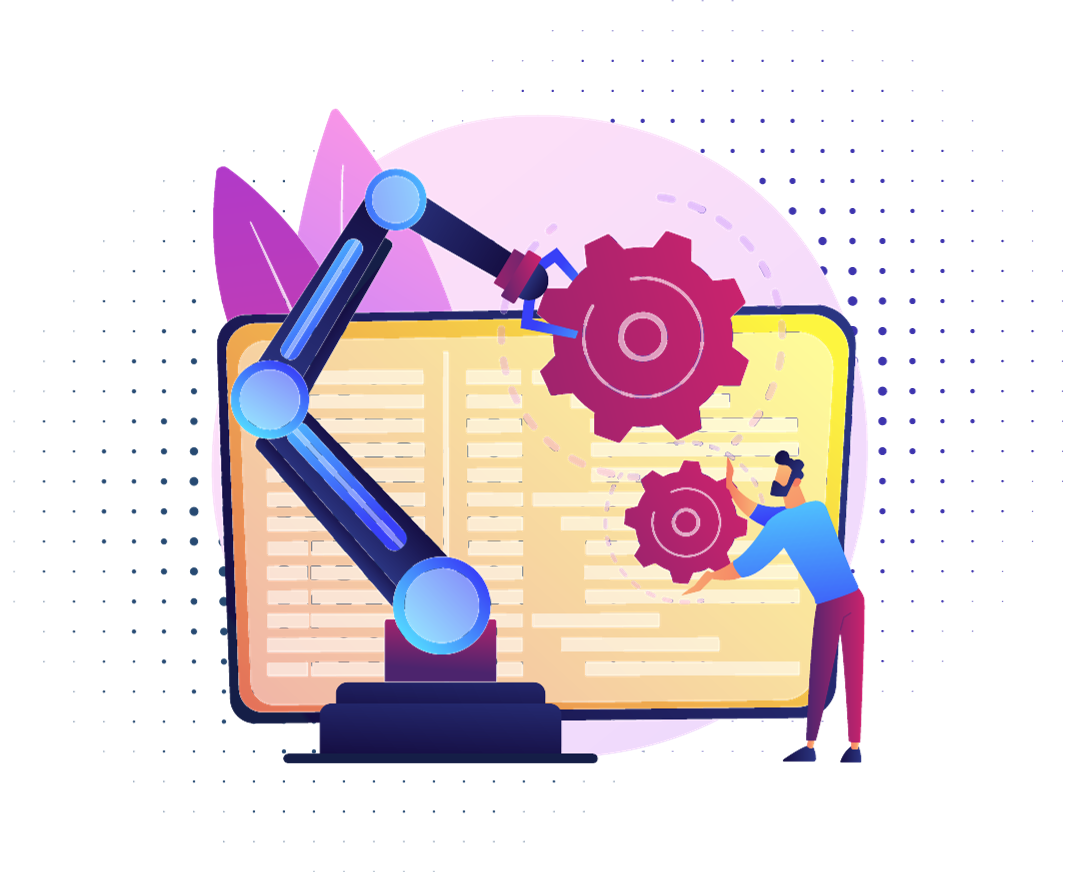In today's fast-paced digital landscape, the interaction between man and machine is often framed through a lens of competition. Pervasive narratives suggest a future where machines supersede human roles, overshadowing the real essence of this partnership: collaboration. Far from the grim predictions, the union of human intuition and machine precision orchestrates a blend of efficiency and innovation.
In fact, studies suggest that this harmony can give businesses a competitive edge, increasing labor productivity by up to 40% and enabling people to make more efficient use of their time.
Imagine analysts harnessing predictive algorithms to decode market trends or doctors collaborating with AI to pinpoint diagnoses. This isn't mere speculation; it's the unfolding reality. The synergy between man and machine promises unprecedented growth, fostering a workspace where technology amplifies human potential.
Take ChatGPT for example. As described by itself, it is “a state-of-the-art language model designed to understand and generate human-like text based on the input it receives”. Trained on vast amounts of text data, it can be an incredibly useful tool to support users with ideation, answering questions, writing code and longer forms of written text, and more.
However, ask it to write you something with little context and no human oversight, and it will likely impede your reliability and integrity. For example, having only been trained on data up to 2021, it is incapable of making current references. It will regularly provide facts or statistics that simply do not exist, and requires human intervention to weed this out.
Humans must be involved in the use of AI to ensure the data it learns from is accurate in the first place. Humans then provide validation and verification of AI-provided outcomes to ensure they are logical and safe. And, in systems where AI continuously learns, humans provide feedback to correct and improve AI responses over time, such as in voice assistants or recommendation systems.
Humans and machines are intrinsically linked, supporting each other and making both better at their jobs.
Enterprise architecture and the AI paradigm
As with most industries today, AI has found its way into enterprise architecture. Integrating AI into enterprise architecture can lead to more intuitive data analysis, pattern recognition, and predictive modeling. Instead of sifting through mounds of data manually, architects can rely on AI to quickly identify trends, anomalies, and interdependencies. Such insights can be pivotal in making informed decisions, optimizing resource allocation, and pre-empting potential challenges.
At Orbus Software, we are developing an AI roadmap for our enterprise transformation platform OrbusInfinity. Our vision is clear: to merge the strategic blueprinting capabilities of enterprise architecture with the computational prowess of AI. This fusion aims to provide architects with tools that don't just assist but amplify their capabilities. From proactive notifications and insights to harnessing predictive algorithms for more accurate forecasting, OrbusInfinity's upcoming AI integration is geared to set a new benchmark in the EA domain.
How can AI in OrbusInfinity support people rather than replace them?
Our vision for AI is to augment and enhance. Think of it as a "junior architect in the palm of your hand" or a virtual assistant. AI's role in OrbusInfinity is to make personnel more efficient and productive. The focus is not on substitution but on support. Moreover, our AI offers measurable and tracking capabilities, allowing organizations to quantify the value of enterprise architecture, emphasizing the importance of the discipline, those working with it, and how it aligns business and IT objectives as one.
What can enterprise architects do that machines can't?
Machines can offer recommendations and guidance, but this doesn't necessarily translate to the best course of action for every unique organization. As mentioned previously, there's a crucial manual validation step. Humans bring an irreplaceable value-add perspective, analyzing and understanding the broader context. Our AI aims to take over the repetitive tasks, allowing people to focus on these value-add tasks and strategic initiatives.
In conclusion, the relationship between AI and enterprise architecture, particularly with platforms like OrbusInfinity, is not one of replacement but enhancement. It's about making the enterprise more resilient, agile, and innovative. With AI, enterprise transformation is not just about evolution; it's about revolution.




.png)


